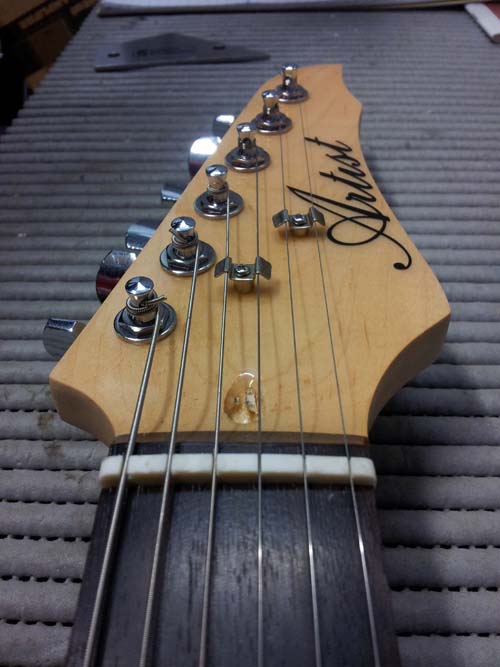Change Standard Trem strings like a Pro
Author: Ian Bush Date Posted:2 January 2017
Change your Standard Tremolo Electric Guitar Strings like a Pro
Learn how to change your electric guitar strings like a pro. This tutorial is for your standard fixed bridge guitars such as our STH series. Check out how to change Classical guitar strings here.
When you change your strings be careful to keep your guitar in tune at all times, and replace one string at a time (1 by 1). Your guitar likes to be tuned, if you take off all the strings it can affect the neck.
1. Lay Down the Guitar
Lay your guitar down on a nice flat surface (a desk or table is often a good place). Make sure there are no bits of debris to scratch your guitar.

2. Remove your Strings
Remove just one of your strings at a time (it's really important to do these one at a time). Just keep loosening the machine head until the string is completely loose, when the string is loose you can just unwind from the machine head. Complete all the steps before removing the next string.
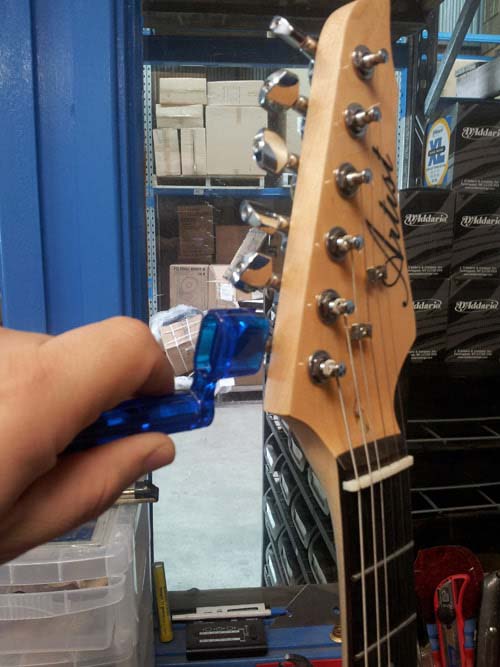
Pro tip - Use a string winder! A string winder will make this step a lot easier and quicker.
3. Pull Through
Now that your string is loose you can remove the string from the machine head by pulling the string through the hole.
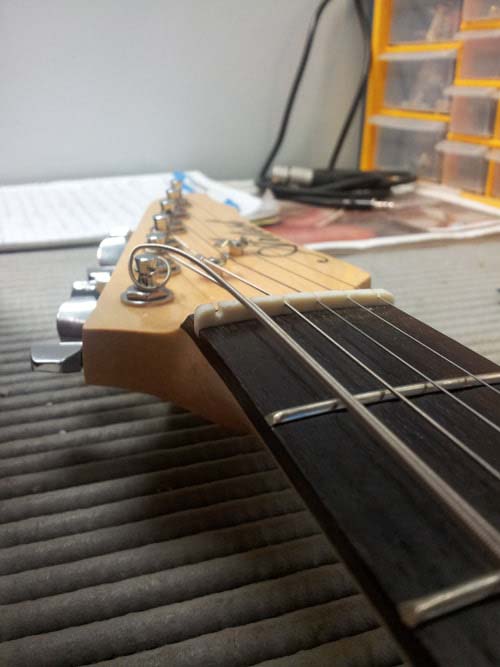
4. Free the String
Freeing the string from the machine heads, we can push it through the bridge to free it from the guitar. The ball end of the string will pop out the spring cover backplate.
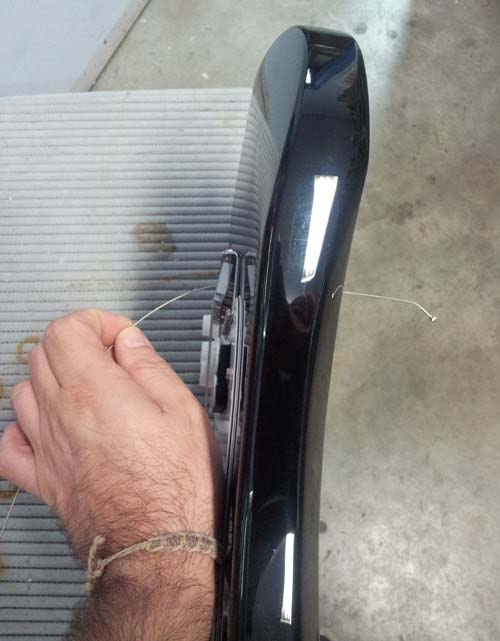
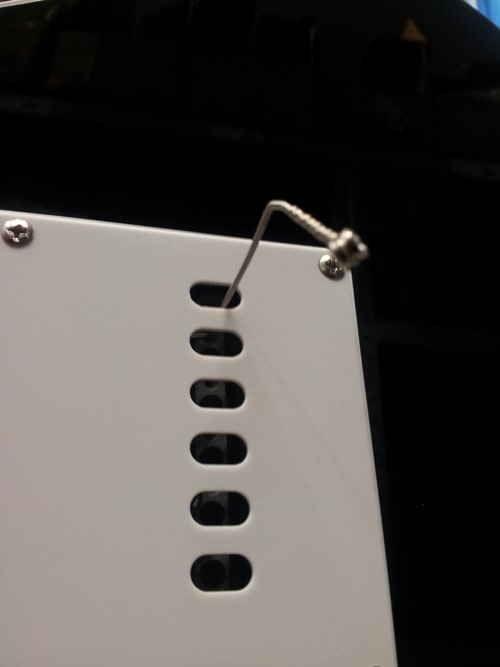
5. Trim the Bottom of the String
Using side cutters, cut the curled end of the worn-out string to make it easier to feed entirely through the bridge and out the back of the guitar.
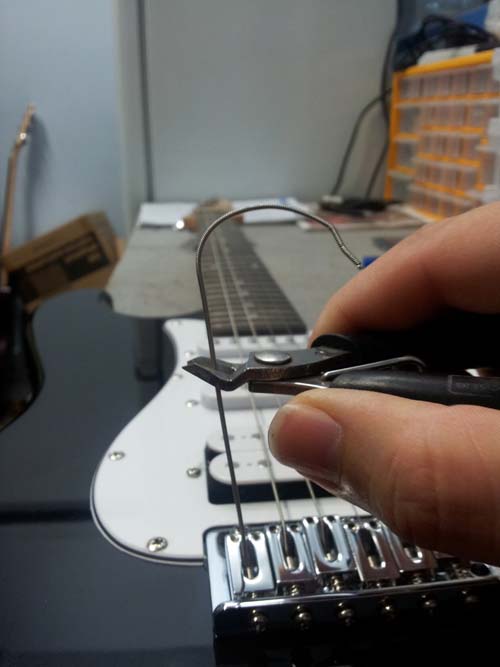
6. Trim the Top of the String
Your guitar should now look like this. Notice how the other strings remain. Never remove all the strings at once. This compromises the neck and the guitar may require a full setup which can sometimes cost over $100.
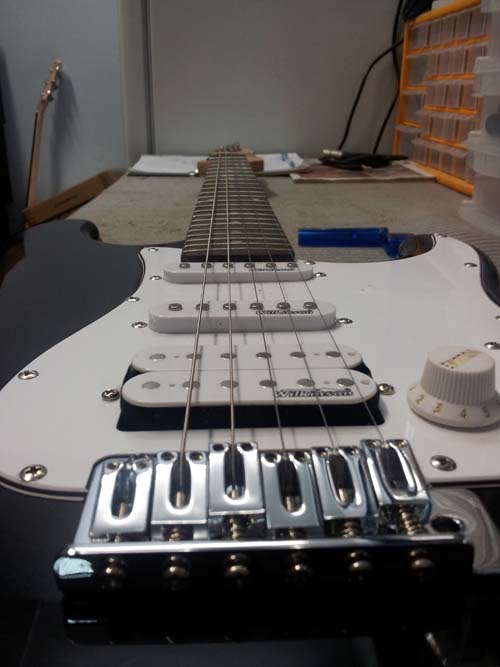
7. Remove the String
Remove your new guitar string from the packaging and feed the end without the ball into the bridge from the back of the guitar through the holes. Any excess string can be trimmed later when you have completed the steps.
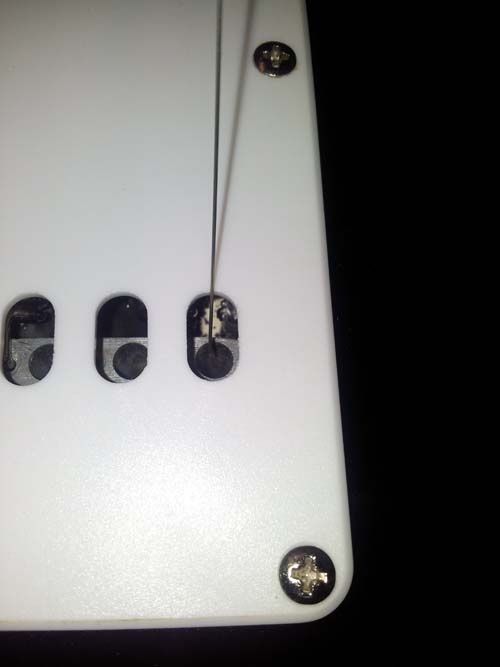
.jpg)
8. Insert the New String
Once you have pulled the string through, make sure the ball end slides all the way into the bridge. Ensuring the ball end is resting right inside the bridge will guarantee that the string doesn't move or slip when under tension once the string is tuned. This can cause premature breakage or poor performance from your guitar.
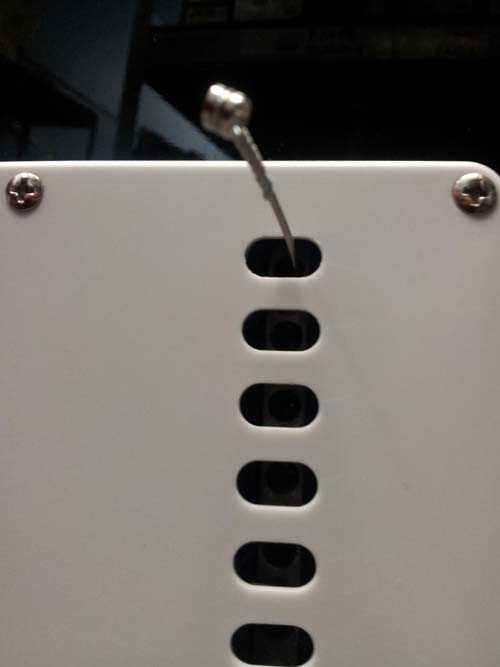
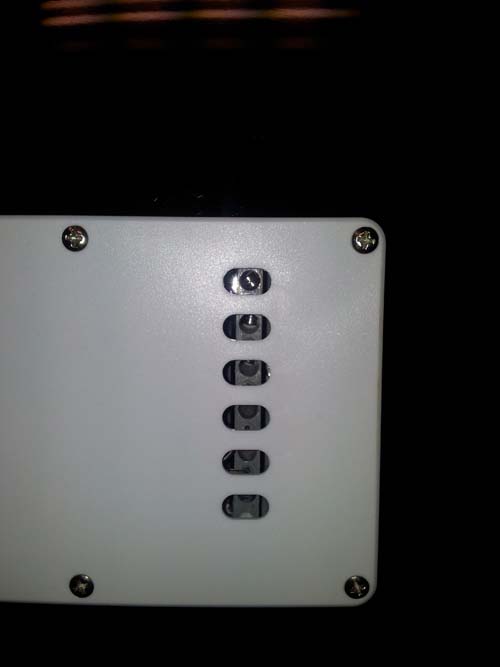
9. Extend the New String
Extend the string all the way out away from the bridge and lay it down flat on the guitar.
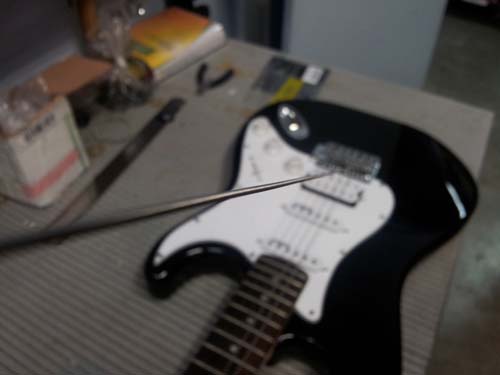
10. Feed Through the Machine Head
Feed the string through the machine head before we begin to wind the string and tune the guitar.
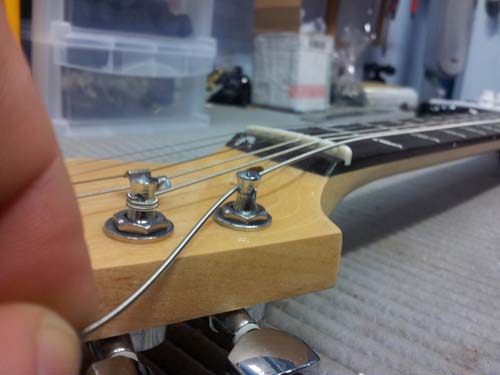
11. Lubricate
Before the string is tuned to pitch, now is a great time to add some lubricant to the nut and the saddle. This will help the strings slip through the nut and saddle. The lubricant will lubricate the two contact points and avoid additional wear on the nut and saddle. Helping keep the strings in tune and avoid strings getting stuck which can lead to breakages. Apply some Graphite along the string slots of the nut and the bridge to lubricate the slots where the strings sit.
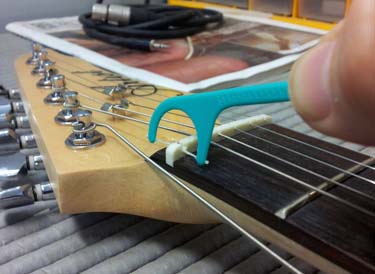
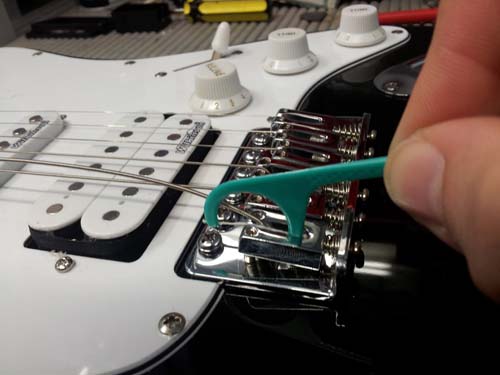
12. Wind the String Around the Machine Head
The next step is to start winding the string around the machine head. First, we have to pull the string back out approximately 4-5cm. I use the first fret as a good guide. Pulling the string tight through the machine head with one hand, use the other hand to pull the string back 1 fret. This will allow the string approximately 2-3 turns around the machine head which will be plenty for the string to stay in tune. It not only looks tidy but too few turns can cause string slippage. Too many turns can cause the string to constantly go out of tune.
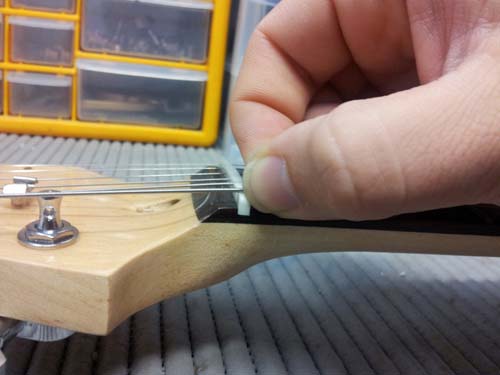
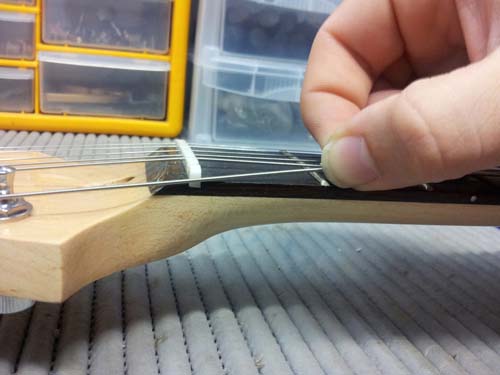
13. Begin Turning the Tuner
With the string held tight with one hand, you can start to wind the string with your hand or string winder. Bending the excess string up will keep it out of the way, we will cut this later once all the strings have been changed. With our hand holding tension on the string, keep it above the nut as the string slipping through will cause the nut to wear and make the string sit lower. This can cause buzzing or worse, string muting. If this happens, the nut will need to be replaced and the guitar will need to be professionally set up, costing $100 or more.
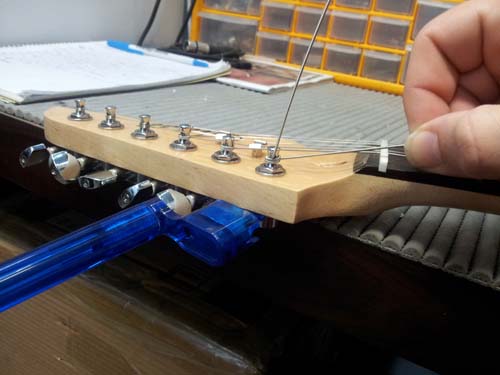
14. Tune Up to Pitch
Once the string starts to tense up without your hand holding it tight, you can begin tuning it to the correct pitch. The string is still stretchy at the moment, so pull gently but firmly on the string to help stretch it. This will help the string stay in tune. The guitar will go out of tune more often over the first few days with new strings before they settle down and stay in tune longer.
This is a critical step to a perfect string change. Play the note, then pull on the string, re-tune, and play the note again. Does it sound like the string is lower in pitch? If it does, you have some slack in your string and you need to re-tune it back up to pitch. Pull on the string again and test it to see if the note changes pitch at all, you might need to do this 5-8 times before the string remains within its correct pitch.
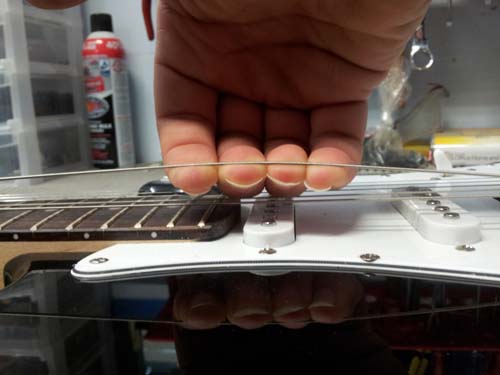
15. Clean Up
Trim the excess string 1cm away from the machine head for a tidy, professional look. Be careful not to accidentally cut the guitar string.
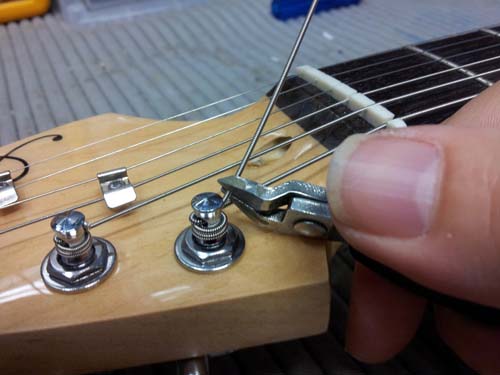
Congratulations! You now know how to change your strings like a professional!
